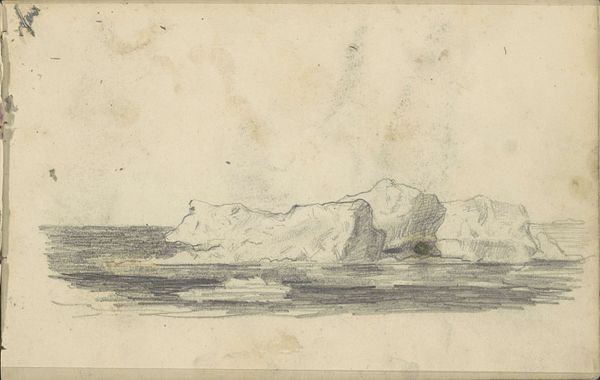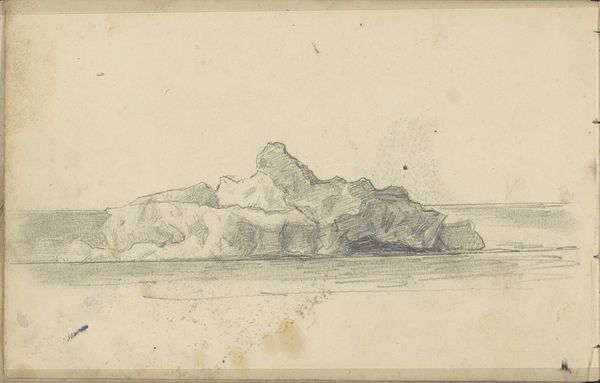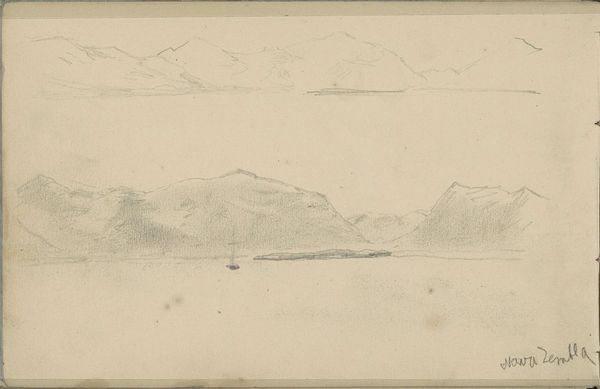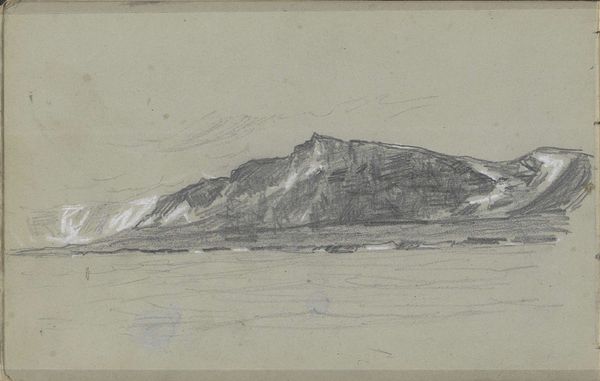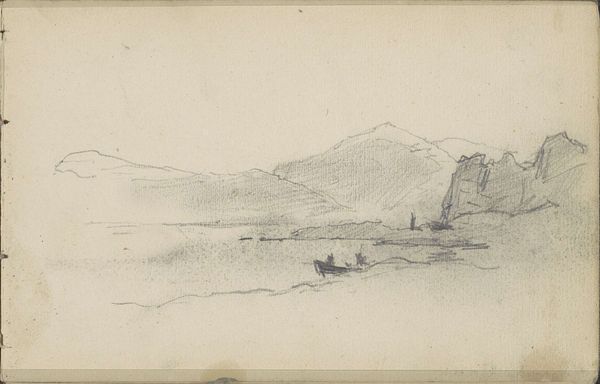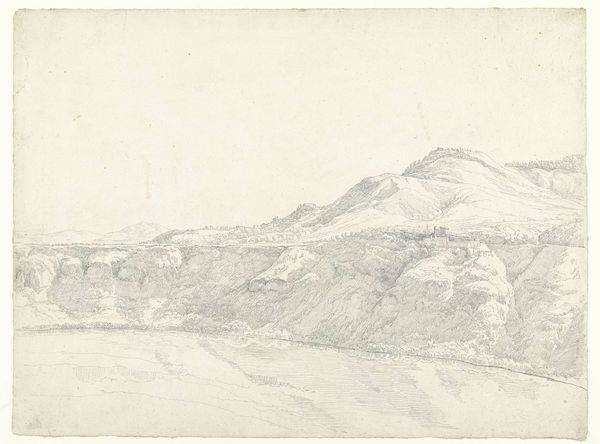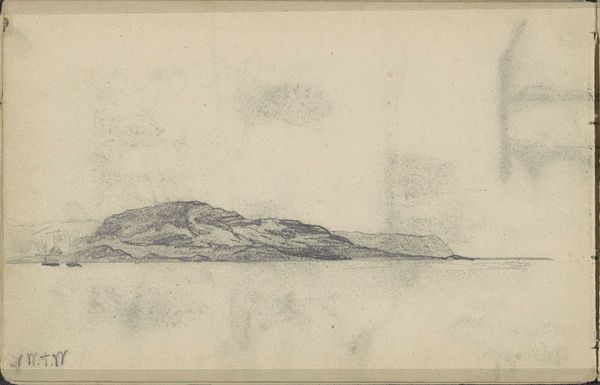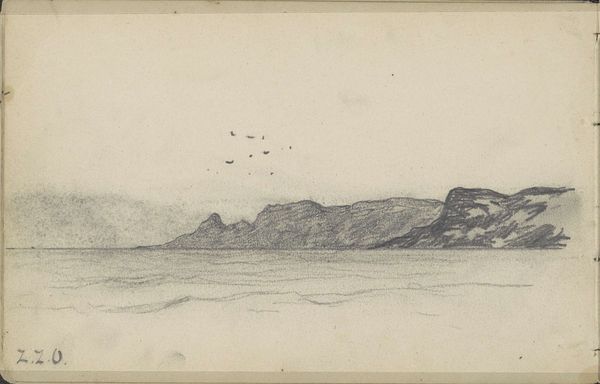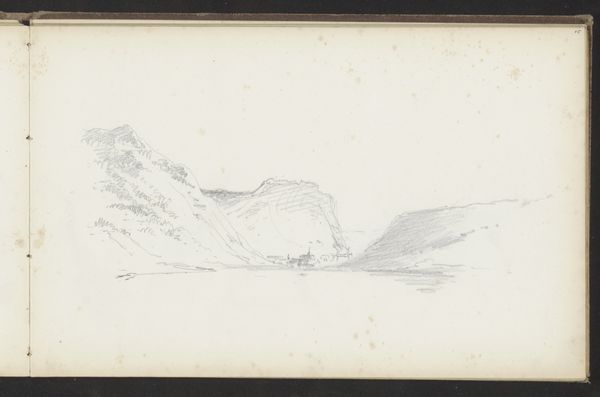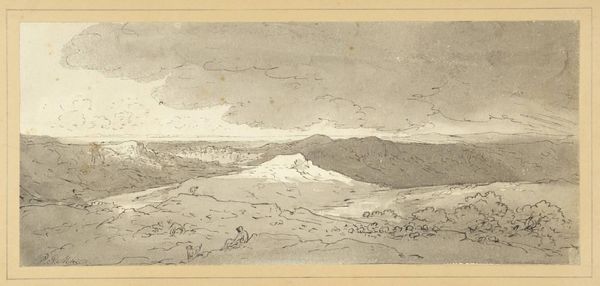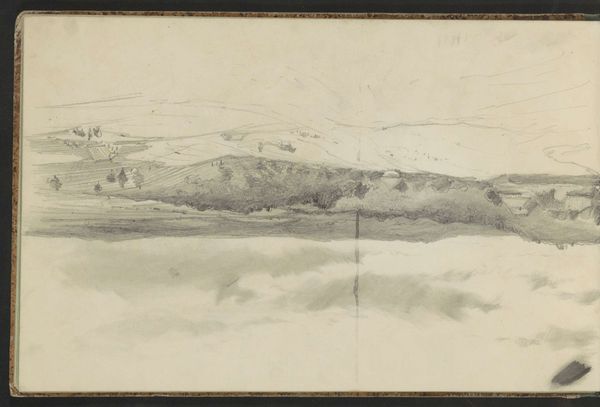
drawing, pencil
#
drawing
#
pencil sketch
#
landscape
#
pencil
#
realism
Copyright: Rijks Museum: Open Domain
Curator: Welcome. Here we have Louis Apol's "Iceberg in the Barents Sea," a pencil drawing from 1880. Editor: Strikingly bleak. There's something deeply solitary and melancholic about this stark iceberg rendered with such precision. Curator: Indeed. Apol was known for his winter landscapes, capturing the subtle nuances of light and atmosphere in the Dutch tradition. But this particular work focuses on a more remote and unforgiving locale. One can almost feel the chill emanating from the pencil on paper. I find myself wondering about his artistic process in creating this piece. Editor: It's more than just the cold; it is a comment on our own precarity. An iceberg is a temporary formation. It is a potent reminder of nature’s indifference and the temporary state of matter—echoing contemporary discussions about climate change and environmental fragility. This iceberg will eventually melt, feeding back into the system... Curator: Certainly. If we look closely at the paper itself, we can begin to unpack how Apol achieved this effect. The varying degrees of pressure applied with the pencil create texture. From the light, almost ethereal strokes suggesting snowdrifts atop the berg, to the denser, shadowed areas which evoke the cold, wet stone. This drawing becomes an exercise in contrasting touch and tone to create both emotional depth and a stark sense of realism. Editor: And beyond the artistic application, this brings to mind a whole colonial discourse; in the nineteenth century, exploring the arctic north served economic and political interests by establishing dominance over othered, “unknown” regions. How much of Apol’s drawing comes down to merely an artistic or creative act, and how much is instead tied to this historic narrative of domination, environmental imposition, and colonial exploitation? Curator: A potent reminder that art, even landscape art, never exists in a vacuum. This drawing is a testament to Apol's skillful manipulation of materials. Editor: And also a window into the complex relationships between art, society, and power. Thanks for pointing out the layers.
Comments
No comments
Be the first to comment and join the conversation on the ultimate creative platform.

